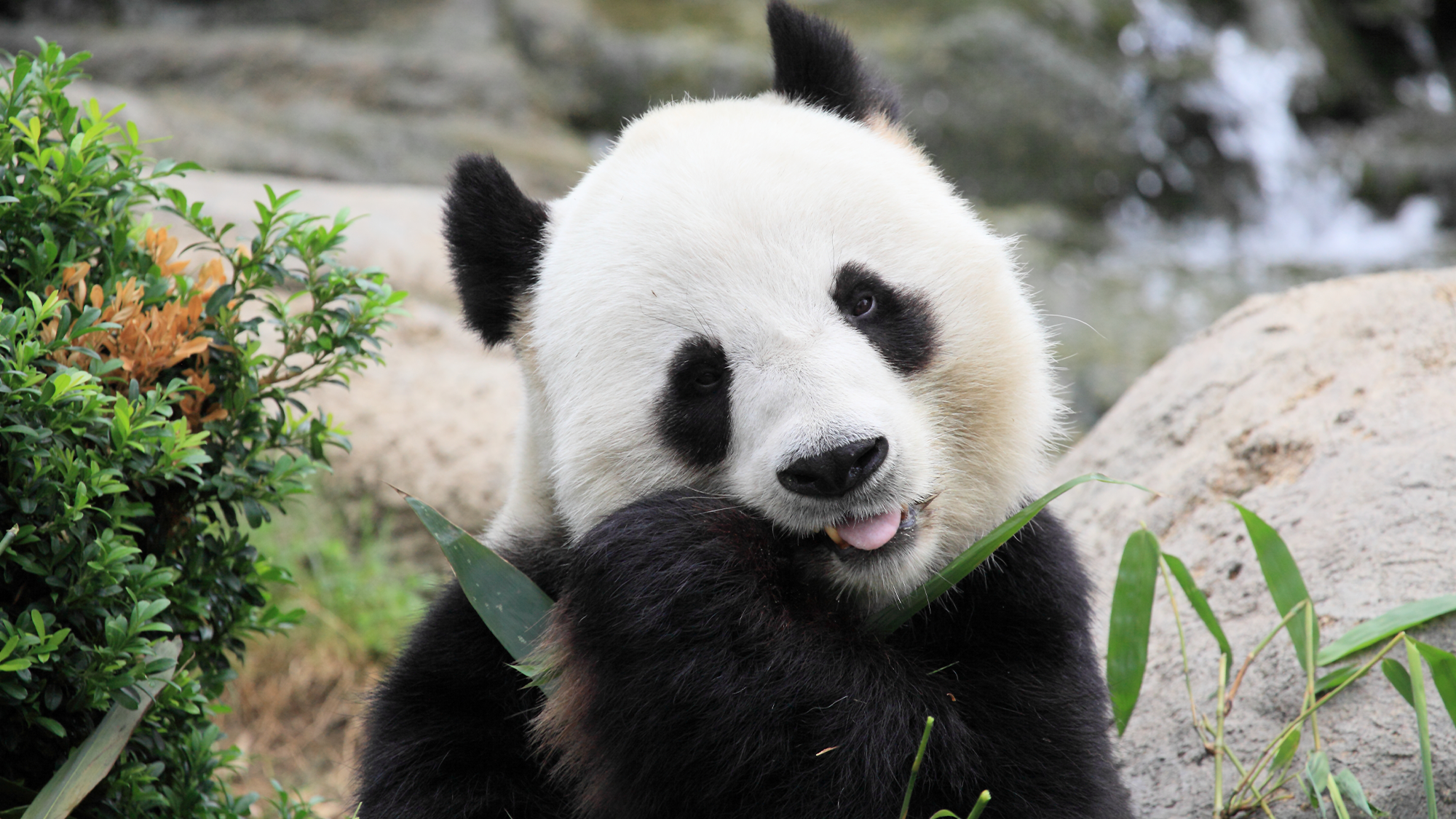

Jet lag isn’t just an unpleasant side effect of travel for humans. It could also affect the internal circadian clock of captive giant pandas living outside of their natural habitat range in China. A study published September 18 in the journal Frontiers in Psychology found that outdoor cues like changes in temperature and daylight are particularly important for giant pandas. Some problems can arise when their environments and natural body clock don’t match up.
[Related: Pandas weren’t always bamboo fiends.]
Animals’ internal circadian clocks are generally regulated by cues from the environment and are linked to changes in their behavior and physiology. For humpback whales in the North Atlantic, the decrease in the daylight around the autumnal equinox likely signals that it’s time for the whales to migrate south to their breeding grounds in the Caribbean. Several species of migratory birds use variation in temperature to time their migrations and delaying their departures may help them navigate climate change, but at a cost.
“Animals, including humans, have evolved rhythms to synchronize their internal environment with the external environment,” University of Stirling PhD student and study co-author Kristine Gandia said in a statement. “When internal clocks are not synchronized with external cues like light and temperature, animals experience adverse effects. In humans, this can range from jet lag to metabolic issues and seasonal affective disorder.”
For the pandas in this study, those living outside of their latitudinal ranges were observed performing fewer activities than they would in the wild and responding to some human-based cues that only exist in captivity.
Giant pandas in the wild live highly seasonal lives, where spring is time for migrations to find new shoots of their preferred bamboo. Migration season is also mating season, possibly because finding mates is easier when pandas are all after the same bamboo shoots. Pandas are also a favorite in zoos around the world and their public webcams make them easier to observe.
In this new study, scientists set out to understand how pandas in zoos are affected by the “jet lag” of living in latitudes they did not evolve in, since important conditions such as daylight and temperature ranges will be different in these areas. According to Gandia, the latitudinal range for giant pandas is between 26 and 42 degrees north and matching latitudes could be between 26 and 42 degrees south, since these latitudes mirror the temperature and lighting conditions further north. Other latitudes will have different amounts of sunlight and varying temperatures, which could alter the panda’s internal clocks and changes to their behaviors, such as, looking for a mate. The study also looked at whether or not anthropogenic cues like regular visits from keepers could also affect their circadian clock.
The team of 13 observers used webcams to monitor 11 giant pandas born in captivity at six zoos both inside and outside pandas’ natural latitudinal range. Every month for one year, they carried out one day’s worth of hourly focal sampling–watching one animal for a set length of time and recording everything the animal does–to see how their behavior changed across a day and how that changed across a year. The observers noted general activity, sexual behavior, and abnormal behavior.
Daylight and temperature changes were particularly important cues for pandas and were closely associated with general activity in latitudes that matched their natural range in China. Just like their wild counterparts, pandas in captivity showed three peaks of activity over 24 hours, including a peak at night. Sexual behaviors were only displayed by adult pandas during the day, which possibly makes it easier to find mates in the wild.
[Related: The science behind our circadian rhythms, and why time changes mess them up.]
The pandas living outside their home latitude were less active, correlating to the different temperature and daylight cues in these newer latitudes.
“When giant pandas are housed at higher latitudes—meaning they experience more extreme seasons than they evolved with—this changes their levels of general activity and abnormal behavior,” said Gandia. One of the abnormal behaviors included reacting to zoo-specific cues, such as becoming very active during the early morning. This indicates that the pandas may be anticipating a keeper visiting with fresh food.
Additionally, the pandas’ abnormal and sexual behaviors fluctuated at similar points. The team believes that this could represent frustration that the pandas can’t mate or migrate in captivity as they would in the wild. The pandas living in mismatched latitudes performed fewer abnormal behaviors related to mating, potentially because they weren’t getting the same environmental cues for sexual behaviors.
“To expand on this research, we would want to incorporate cycles of physiological indicators,” said Gandia. “Importantly, we would want to assess sexual hormones to understand the effects the environment may have on the timing of release. This could help us further understand how to promote successful reproduction for a vulnerable species which is notoriously difficult to breed.”
